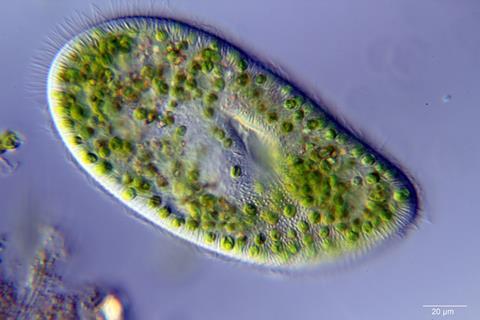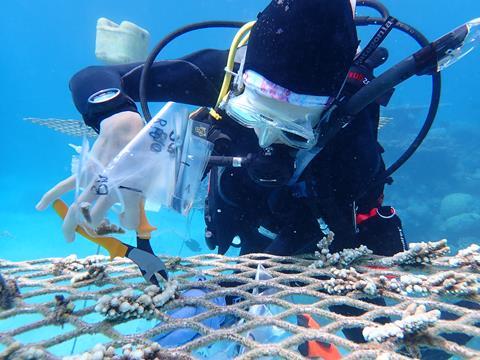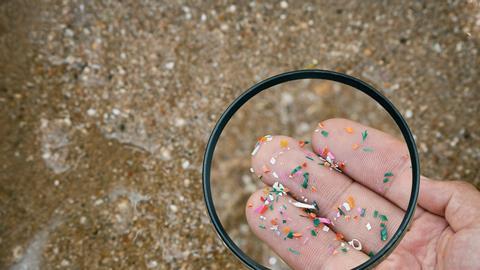This year, Earth Day (22 April) is all about supporting the commitment to ending plastic use, with a call for a 60% reduction in the production of all plastics by 2040. What role can microbiology play in achieving this outcome?
Land and sea
The impact of microplastics on both marine and terrestrial environments, while still unknown in its entirety, is becoming increasingly well documented. As plastics in the soil fragment into smaller pieces known as microplastics (MPs) through natural and anthropogenic processes, they disrupt microbial communities and are absorbed by plants, thereby potentially entering the human food chain and causing health complications. Microplastics, together with even smaller nanoplastics (NPs) in soil, not only disrupt microbial communities but also facilitate the spread of antibiotic resistance.
A study published at the end of 2023 used machine learning to predict the impact that microplastics might have on soil chemistry. They found that the effects that such particles have is dependent on variables such as type, size, shape, and concentration. A separate study found that environmental conditions also play a part – that when soil has a higher moisture content, toxic chemicals in microplastics can leach into the soil and hinder soil fungal richness.
MPs often tend remain largely on the surfaces of aquatic environments, interacting with microbes and animals in ways that are still being uncovered. When plastics enter the ocean, microorganisms attach to and colonise them, forming an ecological community known as the ‘plastisphere’. Researchers from Nanyang Technological University in Singapore found that the plastisphere harbours both bacteria with plastic-eating potential and harmful microbes thriving on samples. A separate study provided preliminary evidence that contamination with MPs may also inhibit the ability of microbes (Paramecium bursaria) to conduct photosynthesis – by as much as up to 50%. The presence of a Vibrio species associated with food poisoning from seafood has also been documented on microfibres in the Mediterranean Sea, highlighting a potential route by which plastics may enter the food chain, posing a threat to human health.

Small solutions to a big problem
As well as the need to reduce plastic production and its eventual release into the environment, strategies other than incineration are required for the removal and/or degradation of waste plastic. A 2017 study estimated that 60% of all plastics ever produced (4.9 billion metric tons) have been discarded and are accumulating either in landfill sites or the natural environment.
Despite the scale of the problem, early signs from microbiological research provide some cause for optimism. In the last year, researchers documented the metabolic pathway of a bacterial strain that could rapidly biodegrade polyester urethane coatings and was particularly tolerant of high temperatures. A separate team reported a bacterial enzyme that was able to break down polybutylene succinate (PBS). A third example comes from a team at North Carolina State University. By introducing enzymes from Ideonella sakaiensis into the saltwater-loving Vibrio natriegens, researchers were able to induce V. natrigens to break down polyethylene terephthalate (PET), a plastic used in everything from water bottles to clothing, in a saltwater environment, at room temperature.
There may also be larger-scale changes to the way plastic is produced on the horizon. In 2021, the companies Carbios and L’Oréal were bestowed a Pioneer Award by The Solar Impulse Foundation for using their enzymatic PET recycling solution in a cosmetics bottle prototype for the first time.
![Pioneer Awards - Emmanuel Ladent, Carbios, and Jacques Playe, L'Oreal[88]](https://d3rmrttq0bsnxi.cloudfront.net/Pictures/480xany/8/8/4/6884_pioneerawardsemmanuelladentcarbiosandjacquesplayeloreal88_710603.jpg)
The discovery of microbial strains able to degrade the components of household plastics does appear to be varied and increasing. But is simply degrading plastic the perfect solution?
Is ‘green’ plastic an option?
It has been remarked upon that most commercially available plastics advertised as biodegradable are perhaps not so effective as the name suggests, owing to the fact that they’re still produced from fossil fuels, are also broken down into MPs, and end up in terrestrial and aquatic environments. There is evidence to suggest that commercially available ‘biodegradable’ plastic straws in coastal ocean systems may take 8-20 months to be broken down. In addition, the majority of commonly used plastics aren’t biodegradable.
One of the most promising alternatives to conventional plastics is polylactic acid, which can be produced from plants, but it is brittle and does not degrade well. To overcome this, a team from Kobe University has engineered a strain of bacteria to produce another bioplastic, called LAHB, which when combined with polylactic acid produced a plastic that broke down in seawater within a week.
In Australia, a team used an alternative to cable ties in an effort to make coral propagation efforts on the Great Barrier Reef more environmentally friendly. They found that whilst one alternative had a higher rate of failure, the alternatives did not differentially impact the coral-associated bacterial communities on nursery structures.

The imperfect nature of ‘biodegradable’ plastic alternatives is why the 2024 Earth Day campaign calls for a reduction in the production of all plastics by 2040. This represents a cultural change, rather than just a technological one.
“Earth Day is a reminder of the importance of environmental conservation and sustainability, encouraging us to come together and take action for a healthier planet and brighter future” – Earthday.org
Discover all articles related to plastic pollution on The Microbiologist here.








No comments yet